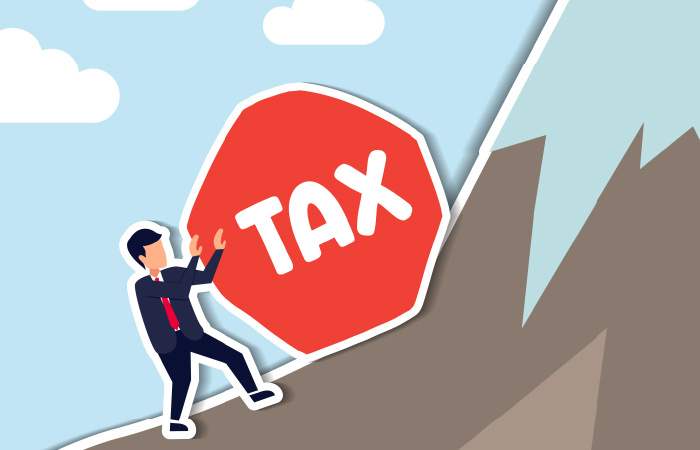Even a small error can have large repercussions when it comes to tax filing. Here are 10 top errors and how to avoid making them.
Imagine the relief of clicking 'submit' on your tax return, confident you've maximized your refund or minimized your payment. Now, picture the stress and frustration of discovering an error that throws a wrench into your financial plans. Whether it's a missed deduction, an incorrect Social Security number, or a simple math mistake, such errors can delay your refund, result in unexpected penalties, or lead to an audit.
But fear not! Below, we've compiled a list of ten of the most common errors filers make. If you can avoid these errors, you'll be on track to file your taxes successfully.
Calculation Errors
Tax forms feature a lot of numbers and some basic arithmetic, so errors crop up frequently. Even one incorrect digit can trigger a cascade of faulty calculations. Using a calculator and rigorously double-checking every number you enter is the best way to avoid math and other numerical mistakes.
Solution: Beyond using a calculator, consider tax preparation software that automatically calculates your tax obligations based on your input information.
These programs often include error checks that flag common mistakes before submission. For more complex situations (or if you have doubts about how to file), hiring a tax professional can ensure accuracy and compliance with tax laws, plus peace of mind.
Biographical Data Errors
Failure to enter the correct Social Security Number - or failure to have your number match your name - is a surefire way to get the IRS to reject your tax return.
Solution: Double-check all personal information against official documents. Consider using tax software that saves your information year over year, reducing the chance of typos in subsequent filings.
Direct Deposit Mistakes
The IRS offers direct deposited tax refunds to help you get your money back faster. While convenient, you must enter the correct bank account and routing number to ensure a timely refund.
Solution: Verify your bank account and routing numbers by checking them against your bank statements or directly with your banking institution. Enter these details carefully if you're using tax software and review them before final submission.
Choosing the Wrong Filing Status
Are you single? Married filing jointly? Married filing separately? Head of household? It's important to get your filing status right - because failure to do so may draw the ire of the IRS and possibly increase your tax bill.
Solution: Use the IRS's Interactive Tax Assistant on their website to determine the correct filing status based on your circumstances. Tax software often includes a questionnaire that guides you to the proper filing status based on your answers about your life events over the tax year.
Not Including All Income
If you draw all your income from one job, you shouldn't need to worry about missing additional sources. On the other hand, people who have multiple income streams (self-employed contractors, for example) need to ensure every payment is accounted for - otherwise, you may be liable for interest and penalties.
Solution: Keep a comprehensive record of all income sources throughout the year, including freelance or gig work. Use a spreadsheet or financial tracking app to log income as earned. Review all documents received, such as W-2s and 1099s, for accuracy and completeness.
Missing the Deadline
Most years, your taxes are due by April 15 (if that date happens to fall on the weekend, you'll have an extra day or two to pay). If you want to avoid paying added penalties, you can request a six-month extension - though you'll have to pay interest on any taxes not paid in full by the April deadline.
Solution: Set reminders for yourself well before the tax deadline, including a reminder to assemble required documents in advance. If you use digital calendars, set multiple alerts.
Failing to Account for All Deductions
If you plan on itemizing your deductions, familiarize yourself with the lengthy list of items that may be deducted. After all, if you need to know what's eligible as a deduction, how will you determine which is best for you - taking the standard deduction or itemizing?
Solution: Make a checklist of potential deductions at the beginning of the year and add to it as you incur eligible expenses. Tax software can also help identify deductions based on your financial and personal situation.
Lack of Evidence for Your Expenses
It's a bad feeling knowing you spent hundreds or thousands of tax-deductible dollars and can't prove it in the event of an audit.
Solution: Develop a filing system (digital or physical) for receipts and documents related to tax-deductible expenses. Apps that scan and categorize receipts can simplify this process, ensuring you have digital evidence of all deductions claimed.
Not Planning for an Unexpected Bill
Ending up with a tax bill you weren't expecting is painful for just about anyone. That's why you must ensure your tax withholding is sufficient to cover your bill.
Solution: Use the IRS's tax withholding estimator tool to gauge if you're withholding enough taxes from your income. Adjust your W-4 with your employer if necessary. For those with variable income, quarterly estimated payments may need recalculations as earnings change.
Forgetting to Sign Your Return
Believe it or not, plenty of people fail to sign their return every year - and have to wait weeks or even months longer to get their return.
Solution: Before submitting your tax return, create a final review checklist that includes verifying your signature. Better yet, tax software will only let you file after completing the signature step, adding an extra layer of error prevention.
The Takeaway
The path to a stress-free filing involves preparation, attention to detail, and a proactive approach to understanding tax obligations. Since even a tiny error can have significant repercussions, remember these tips to maximize a successful filing.

